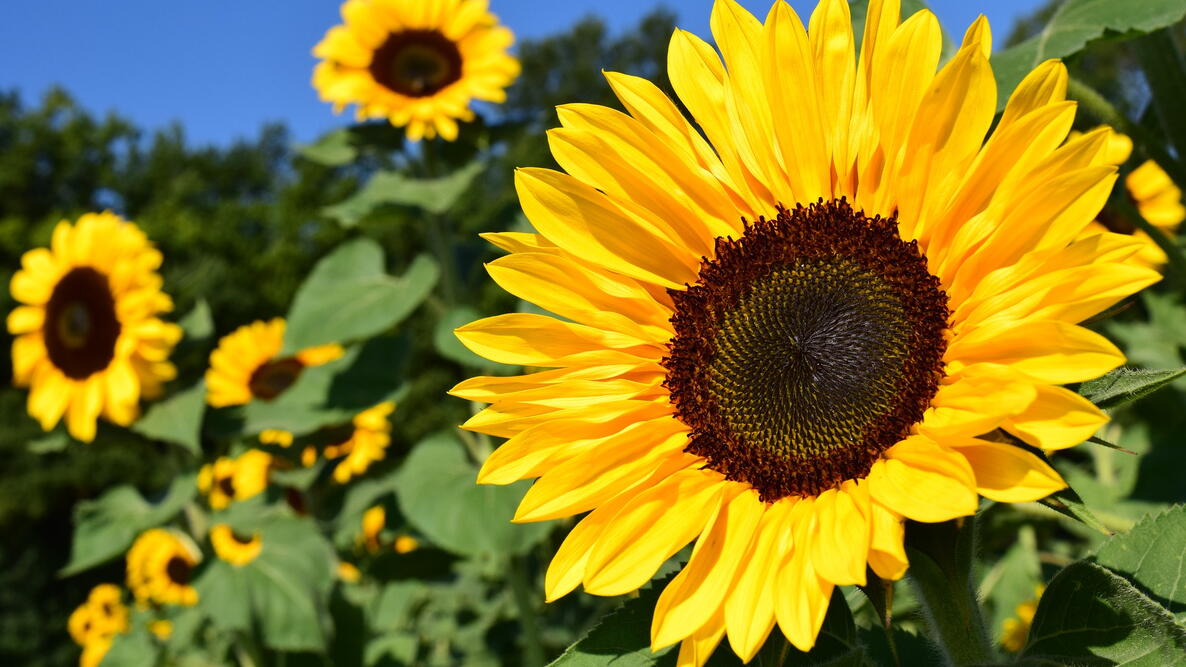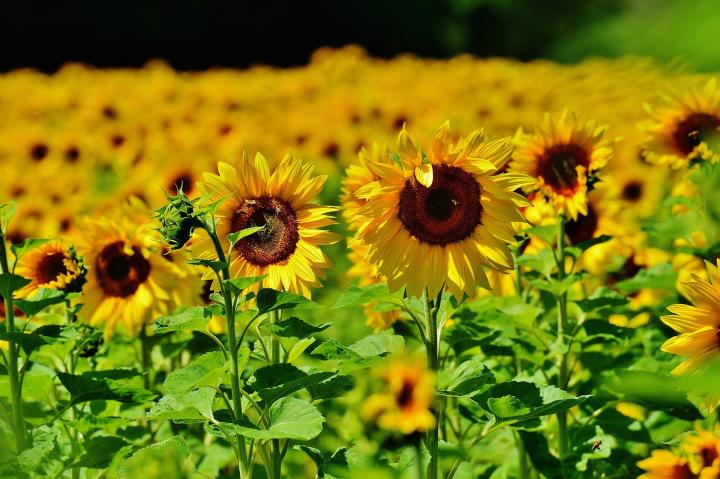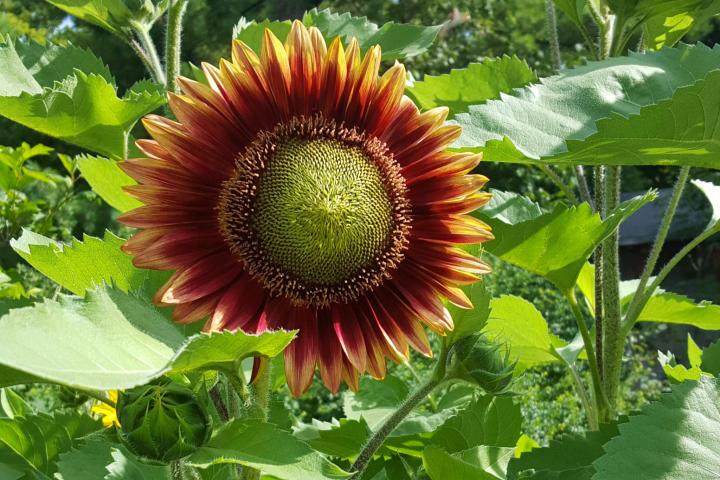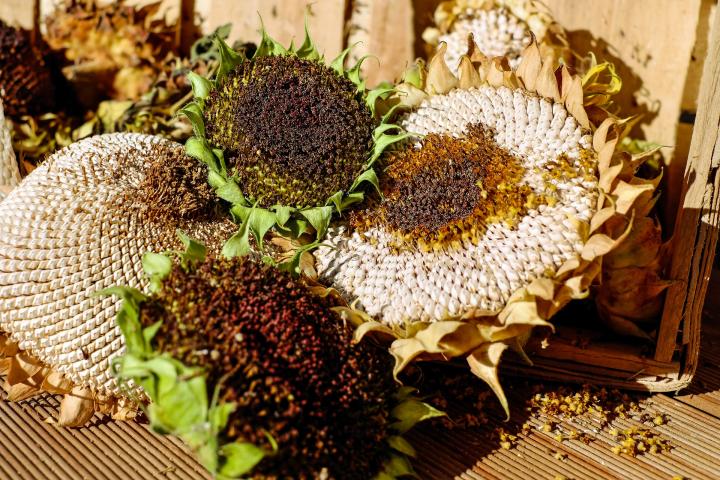
Planting, Growing, and Caring for Sunflowers
Recipes
Cooking Notes
Just one ounce of sunflower seeds contains about 6 grams of protein and 14 grams of oils. The fats are almost entirely unsaturated with 9g of polyunsaturated and 3g of monounsaturated fats per ounce (NSA). The oil is high in linoleic acid and is a good source of vitamin E.
- Some varieties produce small black seeds used in cooking oil, margarine, cosmetics, and animal feed; they are the best sunflower seeds for attracting the greatest variety of songbirds.
- The bigger, striped seeds are grown for snacking and as an ingredient in bread and health foods. They, too, are used for feeding birds, especially larger species, such as jays and mourning doves.
How to Roast Sunflower Seeds
Re-soak seeds overnight in salted water. Run through a strainer and dry on a layer of paper towels.
Bake for 25 to 30 minutes at 325 degrees on a baking sheet. Seeds should be spread out in a single layer. Stir frequently during the baking and remove seeds when they look slightly browned. Don’t burn!
That’s it! You can add some olive oil, salt, and spices to your roasted seeds if you wish.
Or, you can also make suet cakes for the winter birds! See how to make suet.
ADVERTISEMENT
Can sunflower seeds be planted together with farterlize if yes then which type and does sunflower be spread using pesticide
yeah just get a few cows around they will do the trick~ pesticides not needs harmful to bees~
We have a sunflower growing in our garden that must have come from a seed that was dropped by the birds feeding out of the bird feeder. It surprised us when we saw it growing.
Does anyone have issue with big black ants the sunflowers? I have tried everything lots ot get them off but they do not seem to go anywhere . Any ideas ?
The ants are there because of pests called aphids. The ants are attracted to the aphids’ sweet nectar and “farming” them. If you spray water to dislodge aphids, the ants will also go away.
It's a nice thing to see and know the beautiful flower resembling the sun on earth.
Sunflowers can't be too picky! Our birds plant them every year & we always have a strong bed of them the next.
Does anyone have recommendations on best sunflower seed brands?
That depends upon you! What are you looking for? I plant mostly for the birds, so I buy bags of the White Stripped Bird Seed, Sunflower seeds & simply scatter them into the bed, then cover them with MiracleGro for flowers. At other times I planted fancy colors & different heights, which were "nice," but really it didn't make a big difference to me when all was said & done so back I went to the Bird Seed.
Hi, Mel. You really can’t go wrong with Johnny’s Selected Seeds, Eden Brothers, Burpee, or Gurney’s. You can also check garden centers in your area—we bet the seeds are out!















